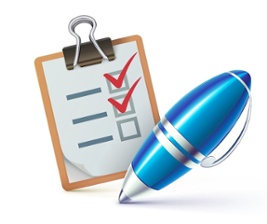 By Glenda Wickus, Hayes Management Consulting
By Glenda Wickus, Hayes Management Consulting
Twitter: @HayesManagement
Electronic health record (EHR) implementation, planning, training, implementation, scheduling, optimization, planning, implementation, implementation! These concepts seem to be the only words we hear buzzing around our heads when we talk about EHRs. But what about post-live? There seems to be a scarcity of conversation once the initial shock has worn off and routines start emerging. Sometimes just knowing how to use something new isn’t enough. Are you leveraging your new EHR to its full potential? Here’s an easy, low cost checklist to ensure you are optimizing your EHR.
- Allow your super users to take a central role: Super users can help end users become more efficient right away. Often, end users are more willing to take constructive feedback and ask questions when working with a colleague versus responding to a management mandate. Super users are also on site and can be proactive by tackling minor issues before they become major problems. They can be the eyes and the ears for the analyst team when problems arise and are extremely helpful when troubleshooting issues or explaining new functionality.
- Conduct short, e-learning sessions. These sessions can be from five to 15 minutes long, and play a key role in optimization. Because they are brief, staff remember everything they learned. They also fit easily into the workday. E-learning sessions can be interactive, which can also help the learning process. Post your sessions on your intranet as a resource so staff can “brush up” on EHR efficiency techniques (i.e., smartphrases, favorites, pref list, smartlink, etc.)
- Review provider encounters. Periodically, review provider encounters to allow coding and compliance departments to determine if documentation and charges are being entered correctly – and whether any charges are missing. This will help you avoid any insurance corrections, reduce billing compliance risk and improve the revenue cycle.
- Develop an optimization request process: Users are the first to recognize the need for a new EHR tool or process that can improve efficiency. Develop an electronic request process/form that can be easily completed and sent to the analyst team. These requests should then be part of a standing meeting of decision makers to review, approve and prioritize the requests. Don’t forget to communicate the execution of these requests so that users know they are being acted upon.
- Create a monthly newsletter: Monthly newsletters are a helpful tool to communicate any changes within the EHR and to send tips and tricks for increased efficiency. Organize the newsletter by specialty so that users can quickly find information relevant to them. Include links to additional teaching documents.
It’s easy to consider your organization “done” post implementation, and yet optimizing your EHR is equally important and can be done cost effectively. One organization with over 55 providers hired Hayes to help with their optimization. After identifying over 60 opportunities for optimization, the group saw improvements in reporting workflows, saving the end users time, and experienced reduced number of items on their problem list, resulting in better operational functionality and better patient care. Good optimization techniques make users more efficient, save time and money, increase compliance, correct coding issues, and give users a feeling of trust and ownership in the use of their EHR.
This article was originally published on Hayes Management Consulting and is republished here with permission.
